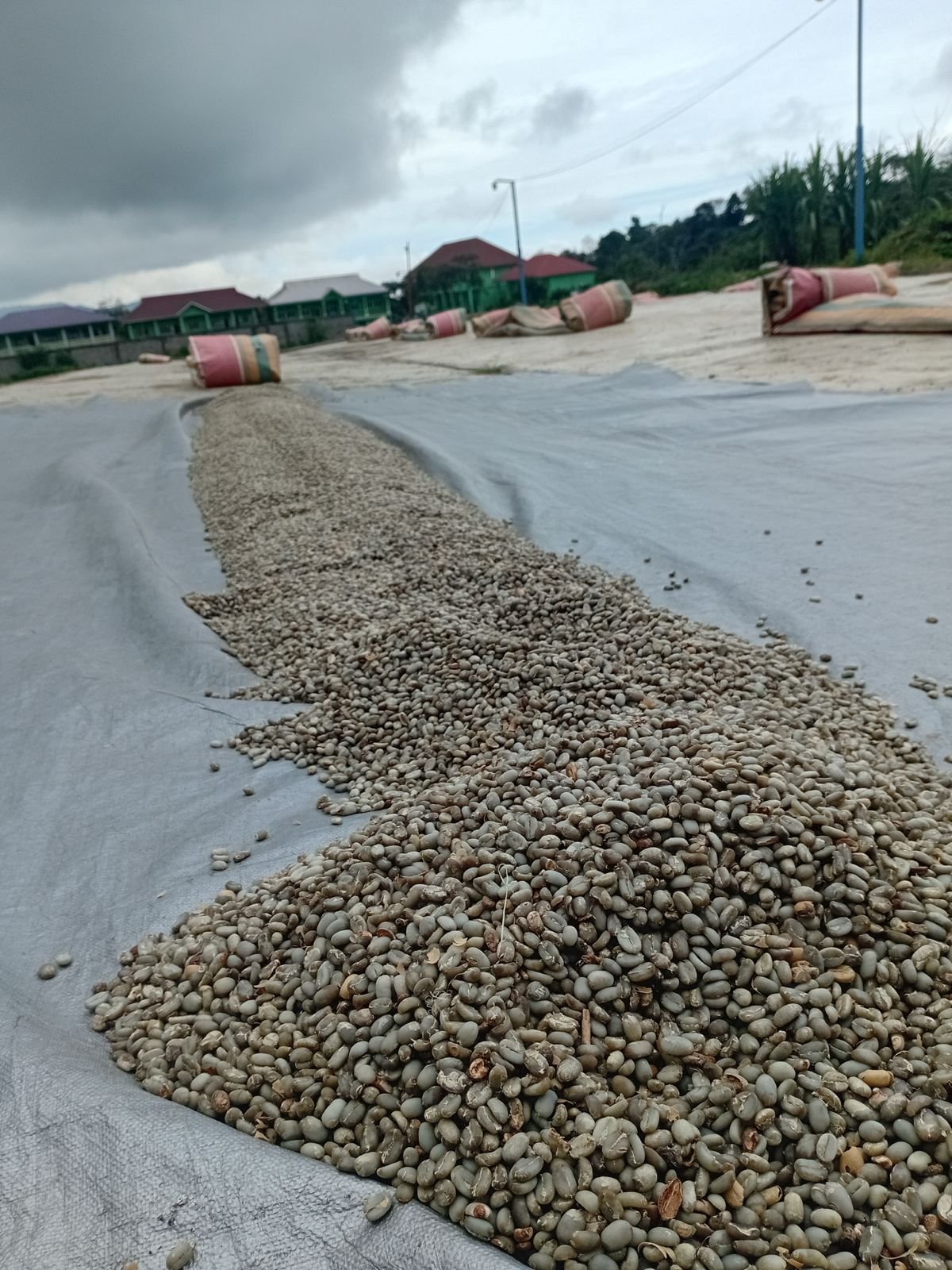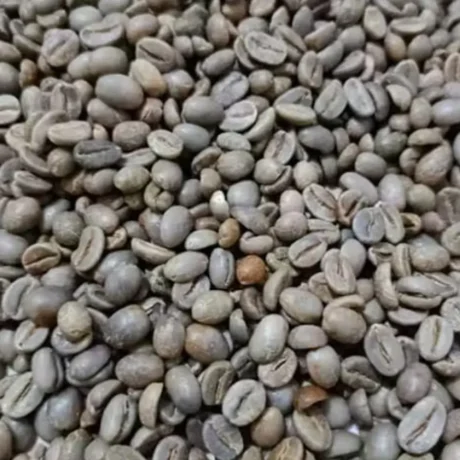In Indonesia, farmers typically use 3 methods to store their coffee: keeping it in the dried cherry, storing it with the husk attached (parchment or gabah), or preparing it as green beans. The choice of storage is not a small decision; it influences the flavor, freshness, and market value of the coffee. For many smallholder farmers, coffee is more than a crop; it functions as a form of savings, carefully stored until the right time to sell.
Across the archipelago, Indonesian farmers usually store their coffee in three main forms: inside the dried cherry, inside the dried husk (parchment or gabah), or as hulled green beans ready for trade. Each method has its own benefits, limitations, and cultural meaning, reflecting the diversity of coffee practices in the country.
The Role of Storage in Coffee Quality
In the coffee sector, storage plays a decisive role in protecting beans before they reach buyers. Coffee is highly sensitive to moisture, temperature, and pests. Without proper storage, beans can develop mold, lose aroma, or degrade in quality, lowering their value in the market.
Storage is not only about keeping beans safe but also about timing. Many Indonesian farmers rely on coffee as their main source of income, yet they do not always sell immediately after harvest. Instead, they keep the beans in a protected form, whether in dried cherry, parchment (gabah), or green beans, until the right moment to sell. This makes storage both a quality factor and an economic strategy.
By choosing the right storage method, farmers can extend the shelf life of their beans, maintain flavor integrity, and decide more flexibly when to release their coffee to the market.
3 Traditional Methods of Storing Green Coffee Beans by an Indonesian Coffee Farmer
1. Storing Coffee with the Dried Cherry Attached
One traditional method used by Indonesian farmers is to store coffee in its whole dried cherry form. After harvesting, the cherries are sun-dried until the outer skin hardens and the inner beans are protected by the natural layers of fruit. Once dried, the cherries can be bagged and kept in storage for several months.

This method offers a natural shield for the beans. The dried fruit protects against moisture and pests, making it useful in regions with limited storage infrastructure. It also requires less processing equipment, which makes it practical for smallholder farmers.
However, storing in dried cherry form is not always efficient. The cherries are bulky, requiring more space, and the beans remain hidden inside, making it difficult to assess quality until they are later hulled. For this reason, while still practiced, it is less common today compared to parchment storage.
2. Storing Coffee with the Dried Husk Attached (Parchment/Gabah)
The most common storage method used by Indonesian farmers is keeping coffee in its parchment form, locally called gabah. In this stage, the outer fruit skin and mucilage have already been removed, but the thin husk (parchment) still covers the bean. Farmers dry the coffee in this form and then store it in bags or simple warehouses.
Storing coffee in parchment offers better protection than green beans. The husk acts as a barrier against moisture and pests, helping to maintain the bean’s stability over time. For smallholder farmers who may not have climate-controlled storage, this method is the most practical and reliable.
Flores Tradition: Coffee as a Savings Account
In Flores, this method carries a unique cultural and economic meaning. Farmers often keep their coffee in parchment form and only hull the beans when they need money. In practice, coffee becomes a kind of savings account. As long as the beans remain in parchment, they stay protected, and farmers can decide when to sell based on financial needs or market conditions.
This approach gives farmers flexibility, but it also has risks. If parchment is stored in poor conditions, high humidity, or exposure to pests, the quality can decline. Even so, the practice reflects how deeply coffee is woven into both the livelihood and traditions of Indonesian farmers.
3. Storing Coffee as Green Beans
The final stage of storage is when coffee is hulled and prepared as green beans, the form most widely traded in Indonesia and internationally. At this stage, the protective husk has been removed, leaving only the bean itself. Green beans are packed into jute or hermetic bags and stored in warehouses, ready to be sold to exporters, roasters, or directly into the specialty market.

Storing coffee as green beans makes trade more efficient. Buyers can immediately inspect bean quality, measure moisture content, and evaluate defects without further processing. Green beans also take up less volume compared to dried cherries or parchment, which reduces transportation costs.
However, green beans are more vulnerable to environmental conditions. Without the parchment layer, they are more sensitive to humidity, pests, and temperature changes. To maintain quality, proper storage facilities are needed, ideally with controlled airflow and stable humidity. With good warehouse management, green beans can stay in excellent condition for 6–12 months, or even longer when sealed in hermetic bags.
Comparative Insights
Indonesian farmers rely on three main storage methods: dried cherry, parchment (gabah), and green beans. Each has its own strengths and limitations depending on purpose, infrastructure, and tradition.
| Storage Form | Protection Level | Shelf Life | Benefits | Limitations | Typical Usage in Indonesia |
|---|---|---|---|---|---|
| Dried Cherry | High (outer fruit intact) | Several months | Natural shield, low-cost, no equipment needed | Bulky, hard to assess quality, less common today | Used in smallholder settings, dry climates |
| Parchment (Gabah) | Medium–High (husk layer) | Up to a year (if dry and safe) | Maintains bean stability, flexible selling, culturally important (Flores) | Needs a controlled warehouse, higher risk if mishandled | Most common method in rural Indonesia |
| Green Beans | Medium (no husk protection) | 6–12 months (longer with hermetic storage) | Ready for trade/export, easier quality grading, efficient storage | Needs controlled warehouse, higher risk if mishandled | Requires space; quality drops if stored in humid conditions |
Analysis
- Dried cherries are the simplest and most traditional, but less efficient for trade.
- Parchment/gabah balances protection with flexibility, making it the most common farmer-level method. In Flores, it also represents a cultural practice of treating coffee as savings.
- Green beans are essential for commerce and export, but require better facilities to avoid quality loss.
Conclusion
In Indonesia, the way coffee is stored after harvest is not only a technical choice but also a reflection of culture and livelihood. Farmers use three main methods: storing in dried cherries, keeping beans in parchment (gabah), or hulling into green beans. Each method has its own role — from protecting beans naturally, to giving farmers financial flexibility, to preparing coffee for international trade.
Among these, parchment storage is the most widespread, balancing quality preservation with practicality. In Flores, it even carries a deeper meaning, where coffee in parchment is treated like savings, hulled only when money is needed. On the other hand, green bean storage has become essential for modern trade and export, though it requires proper facilities to maintain quality.
Ultimately, storage is where tradition meets commerce. It safeguards the hard work of Indonesian farmers, ensures the coffee’s value, and connects the farm to the wider world of roasters and consumers.





